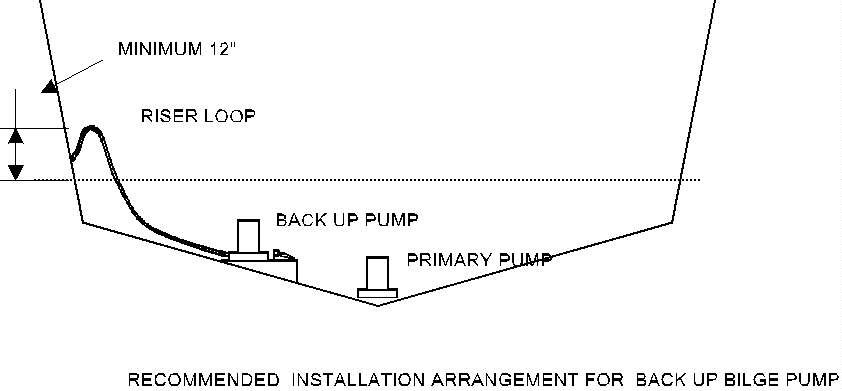I think it's the back pressure, if I remember correctly, and it was stated as to why no backflow valves, which as I understand them are check valves....
I'd never heard of them, so I looked them up after they were posted earlier by kjd. I just opened a random pump's info from their site, and thought, hmm, vertical hoses only & no check valves, interesting... So I remembered it.
Otherwise, yep, makers info and directions...
To compare the vert pipe to house plumbing & sump pumps, I do suspect it was an auto shut off pump. For a given pump, with a stated outflow pipe diameter, a sump pump will only push a vert column of water so far, it'll need to be pumped out the side of the house somewhere below that max lift elevation.
Using engineering that is WAY over my head, I guess the designers of the pump know what that distance is, and can set the auto shut off to occur when the weight of the water column falls below a minimum threshold, reducing the back pressure (resistance against it's impeller), when the pumps specs, outflow pipe diameter & etc are held constant.......
My amateurish explanation may not be wholly correct, but is generally accurate :cold:
Taz: I need to check, but I'm not sure I understand the vented loop to prevent siphoning that I highlighted in
blue below.....
Is this the 'check valve' you're using?
A vented loop w/ a duckbill 1-way valve? So not really a check valve or backflow preventer, but does those functions.
Cool, learned something again today

FOUND IT: in the Q&A section at the bottom of the
Automatic Bilge Pump page....
Questions & Answers
Are the Rule bilge Pumps self priming?
Bilge pumps are not Self Priming
Can the hose run horizontally?
No......the discharge hose must run continually upwards •Reductions in hose size will reduce output
Will increasing the discharge pipe increase output?
Increases in hose size will not increase output
Does reversing polarity decrease pump capacity?
Reversed polarity runs pump at 20% capacity
Should I increase the wire gauge on long runs?
Increase wire gauge for each additional 20 foot run
Can I install a check valve on the pump discharge?
Check valves are not recommended
How do I prevent water from siphoning back?
Install a vented loop for anti-siphoning
Do the pumps have a break-in period?
Break in for 10 hours for maximum pumping
Does Rule repair the pumps?
Rule does not repair pumps - it is not cost efficient for the consumer
Can I get parts for Rule Pumps?
Rule does not sell pump parts due to liability
Why doesn't Rule Pumps want check valve on the pump's discharge?
Check valves are prohibited by the American Boat & Yacht Council for use as an anti-siphon device-and with good reason: They're notorious for failing in both the open and the closed position, which respectively leads to flooding or failure to pump. If the valve is close to the pump, the pump may not be able to overcome the weight of the water on the other side of the valve, rendering the pump ineffective.
Why does my automatic Rule Pumps turns off if I install a check valve on the discharge of the pump?
The automatic bilge pump turns on about every two and a half minutes to "check" for high water. If water causes resistance on the pump, it continues to pump until the resistance lowers. With the check valve installed at the pump, it cant feel the weight of the water, and shuts off, allowing the bilge to fill with water!
Do I need a separate switch with automatic Rule Bilge Pumps?
Through advanced electronic technology, Rule Automatic Bilge Pumps eliminate the need for a separate switch to activate the pump. Once power is supplied, starting and stopping is completely automatic. The pump checks for water every 2 ? minutes by running for a second and measuring load against the impeller. If water is present, the pump remains on until the water is removed. Thereafter it resumes its 2 ? minute check cycle. The pumps feature two positive leads, one which is automatic and one which can manually override the pump and turn it on at any time.


























